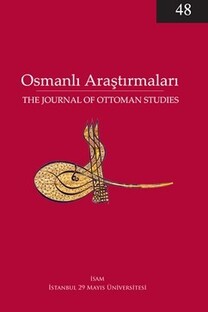Afterlives of Komitas K‘eōmurchean (1656-1707): Commemorating an Istanbul-Armenian Martyr in Armeno-Turkish Literature and Sacred Pilgrimage
Komitas K‘emurchean, Eremia K‘emurchean, Armeno-Turkish, Neo- Martyrs, Armenian Catholics, Ecumeniacal Holy Sites Confessionalization,
___
- Aslanian, Sebouh D.: Global Early Modernity and Mobility: Port Cities and Printers in the Armenian Diaspora, 1512-1800, forthcoming.
- ISSN: 0255-0636
- Yayın Aralığı: 3
- Başlangıç: 1980
- Yayıncı: TDV İslâm Araştırmaları Merkezi
V. L. Ménage, Colin Imber (prep.), Ottoman Historical Documents: The Institutions of an Empire
Yıldıray Özbek ve Ayşe Budak (haz.), Fetih Öncesi Osmanlı Sanatı ve Mimarisi
Gölgelenen Sultan, Unutulan Yıllar: I. Mahmud ve Donemi
VIII. Taşnak Kongresinin Perde Arkası Ya Da Taşnakların I. Dünya Savaşı Öncesi Müttefik Arayışı
Mehmet Genç (1934-2021): Bir Büyük İmparatorluğun İktisat Tarihçisi
Eskiyi Muhafaza Yeniyi Tevriç: Medrese Islahatı Risalelerinin Dünyası
